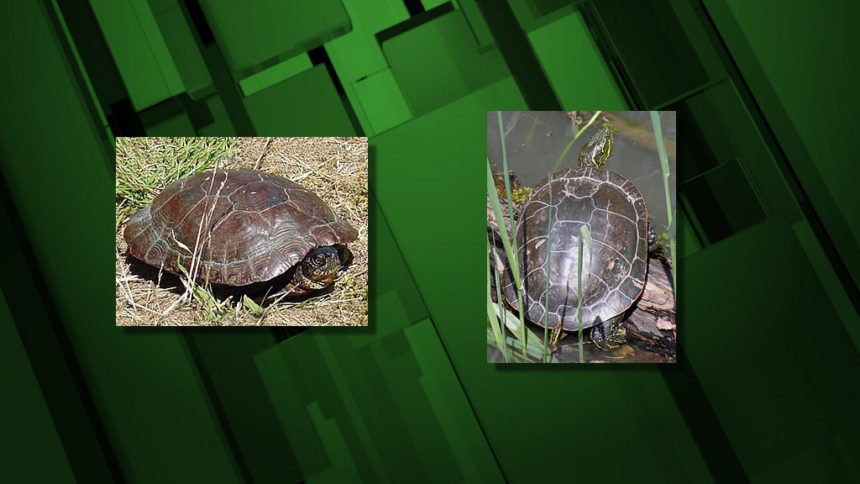ODFW’s advice: Let the turtles cross the road

Don't take them back to water; nesting habitat is key to their survival
SALEM, Ore. (KTVZ) -- Oregon Department of Fish and Wildlife biologists advise Oregonians to be on the lookout for turtles on roadways, bike paths or trails. During the months of May through July, female turtles begin searching for suitable nesting grounds to lay their eggs.
“It’s not uncommon to see female turtles on land at this time of year, as they leave the water to lay their eggs,” said Susan Barnes, ODFW conservation biologist for northwest Oregon. “If you see a turtle on land, the best thing to do is let it continue on its path. Don’t try to return it to water.”
It’s fine to move it off a road or trail (if it is safe to do so), but put it on the other side, pointed in the same direction it was headed, she advises.
Barnes, a co-chair of the Oregon Native Turtle Working Group, works to conserve Oregon’s turtles year-round.
“Our native turtles are in decline, so anything we can do to help makes a difference,” she added.
Barnes suggests the public can help by reporting turtle sightings on the Native Turtles of Oregon website or through iNaturalist or HerpMapper, mobile applications that can be downloaded on your smartphone or other mobile device.
“This helps us identify the locations of our native turtles, as well as invasive turtles that we may try and remove,” Barnes said.
Turtle sightings also help ODFW and their native turtle conservative partners decide where to conduct visual surveys for turtles, to collect more information about turtle at a particular location.
Oregon has only two species of native turtles: the western painted and the western pond. Both are both protected by state law; it is illegal to take them from the wild and to keep them as pets.
Non-native turtles include red-eared sliders and snapping turtles. It is illegal in the state to buy, sell, possess or release non-native turtles. Red-eared sliders are relatively easy to identify. Most have red “ears” (markings) on the side of their heads.
If you are in possession of a non-native turtle, contact your local ODFW office for guidance.
Both the western painted and western pond turtle are included on the State Sensitive Species List (ODFW 2016) as “Sensitive-Critical” and highlighted in the Oregon Conservation Strategy as a priority species in need of help.
Population declines are due to habitat loss, degradation of nesting areas by invasive plants, illegal collecting, disease and competition from non-native turtles.
For more information
To see photos of Oregon’s native and non-native turtles and print an identification flyer, visit the ODFW website.
For more information on the Oregon Conservation Strategy, visit the ODFW website.



